The Best Santa Maria Tri-Tip Recipe
We've got summer grilling on our minds. You're sure to love this tri-tip recipe from Santa Maria, California.
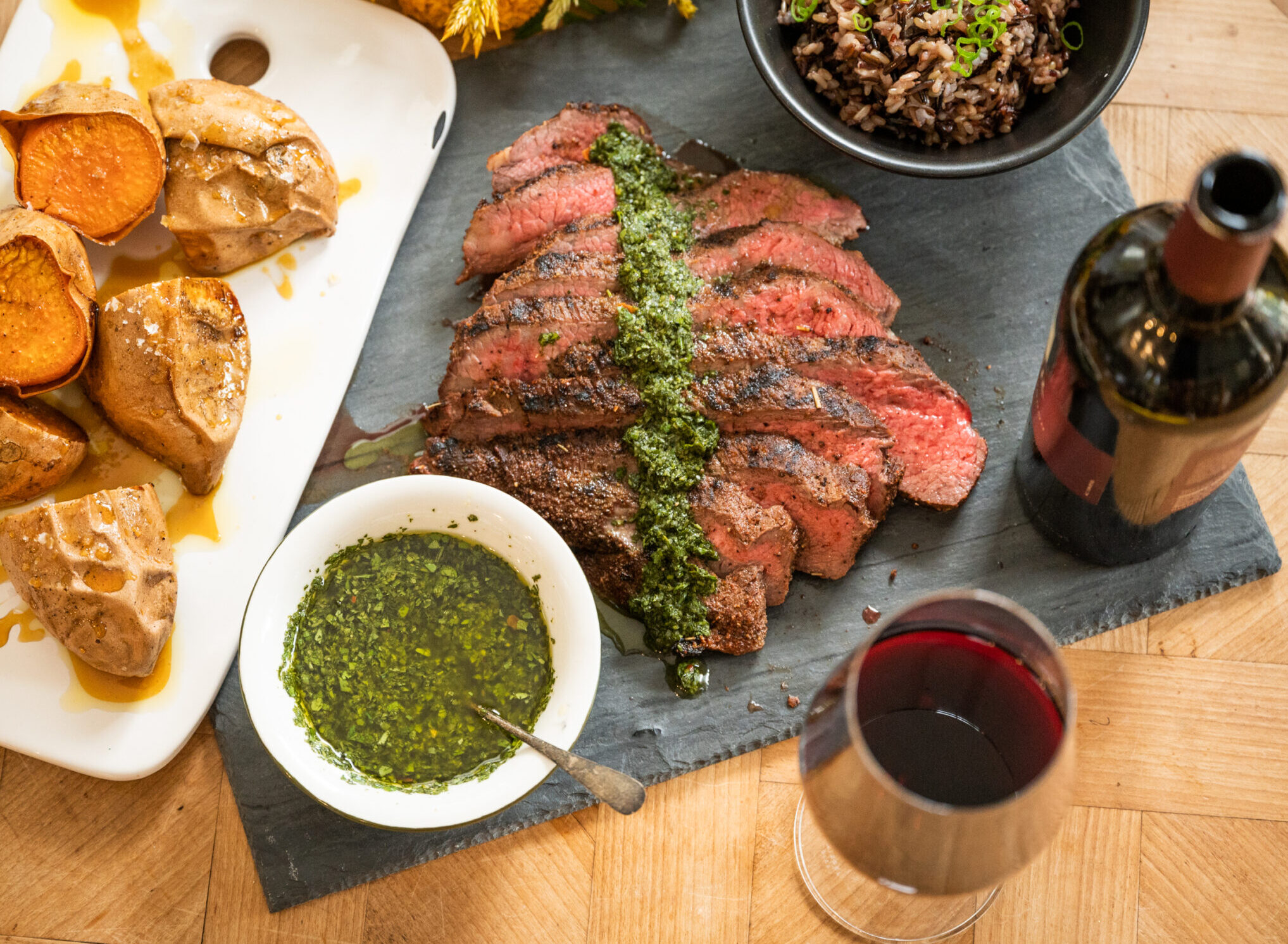
We've got summer grilling on our minds. You're sure to love this tri-tip recipe from Santa Maria, California.

Fire up those grills! Summertime is for grilling and you’d be hard-pressed to find a more California cut of beef than a Santa Maria tri-tip. The tri-tip cut itself has only been around since the 1950s, but California ranchers and cowboys have been grilling hearty hunks of meat over hardwood for centuries. Back when Spanish missions first dotted the landscape, vaqueros would gather together at the end of a hard day’s work for a communal meal served with traditional Spanish sides. In this part of the Central Coast, that meal eventually became known as Santa Maria-style barbecue, consisting of wood-grilled steak, pinquito beans and salsa. You’ll find our version below.
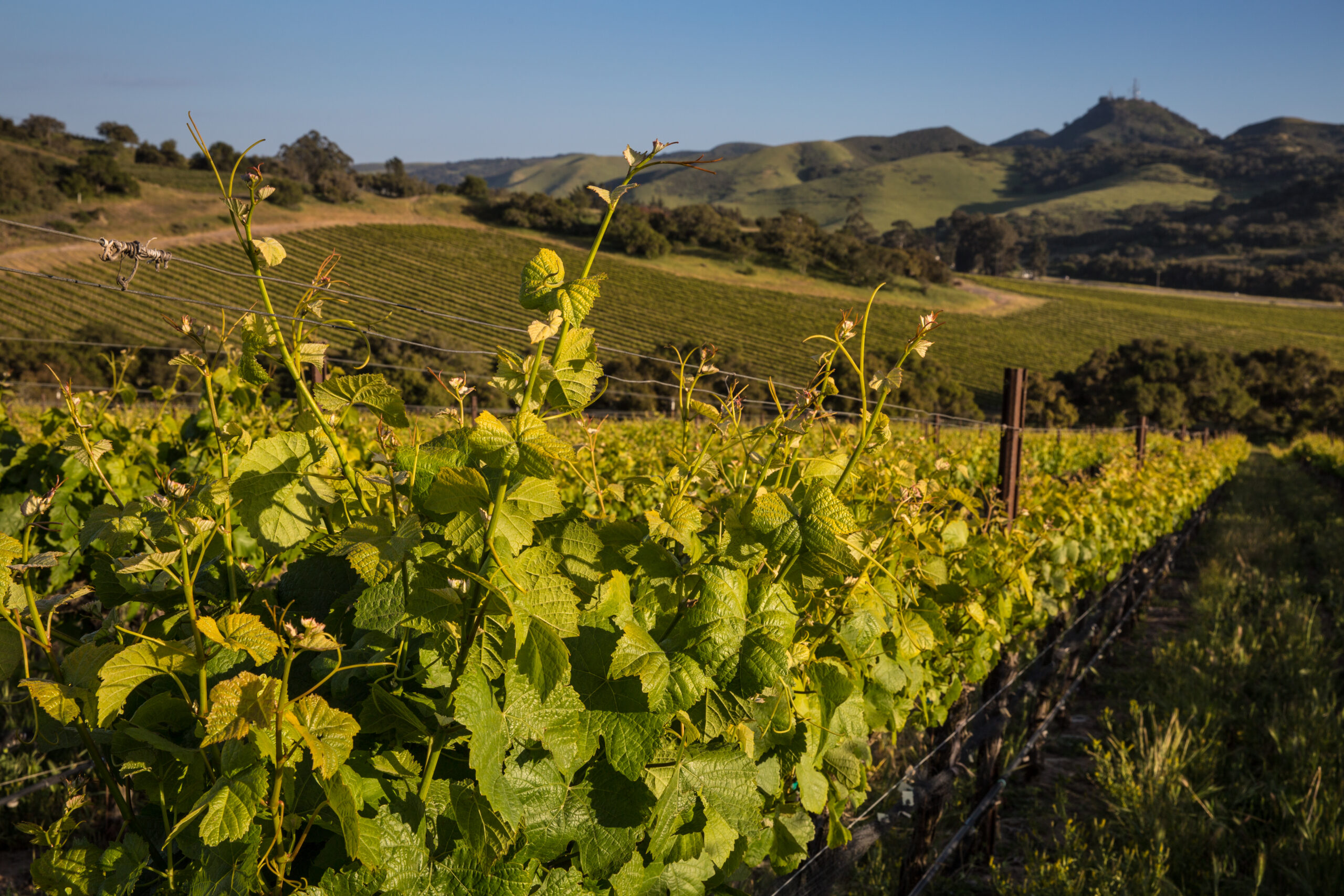
Santa Maria is located in the heart of California’s Central Coast. It’s a beautiful part of the state with oak-studded rolling hills and, despite its proximity to the posh resort town of Santa Barbara, it still retains a wild west vibe. Because of its long history with cattle ranching, it’s probably best known for its barbecue style. However, it’s also big on wine. Santa Maria is located in the northern portion of the Santa Barbara County winegrowing region and winegrapes have been grown there for nearly two centuries. It wasn’t until the 1960s that local vintners began getting serious and started experimenting to see which grape varieties performed best. They quickly realized they had a good thing going. Word got around and more winemakers followed suit. And in 1981, Santa Maria became just the second recognized American Viticultural Area in California.
Santa Maria Valley is a transverse valley running west to east, which means that ocean breezes and fog funnel in and cool the vines at night. Remember the cult-classic movie “Sideways?” It was filmed near here and named after this unusual transverse geography. Because of ocean influence, grapegrowers are able to nurture elegant Pinot Noir, Chardonnay and Northern Rhône varieties like Syrah, Roussanne, Grenache and Viognier. Its mild Mediterranean climate means warm days, cool evenings and a long growing season. Add to that the region’s variety of soils from sandy and cobbled loam to alluvial sand and clay mixed with shale. Translation — it’s one of the most interesting and dynamic places to grow wine in the Golden State and quite frankly the world.
The Santa Maria Valley is now home to more than 30 tasting rooms and has about 7,500 acres under vine. Even though it’s been named one of the Top 10 Cities for Wine Snobs, it’s definitely a chill and affordable wine region. In summer you can hop on the Wine Trolly and visit several of Santa Maria’s top tasting rooms. Though it hangs tight to its rural charm, you’re more likely to find Teslas rather than horses parked at the famed Hitching Post — but inside you may still see a cowboy or two sipping on some award-winning Pinot Noir.
The Santa Barbara winegrowing region broadly embraces sustainability. Home to some of the Golden State’s many organic, regenerative and Biodynamic® vineyards, vintners there share the same commitment to preserve and protect the land for future generations to come. Winemakers have leveraged the region’s ideal Mediterranean climate in their favor when it comes to sustainability, and many have adopted methods such as dry farming, natural pest control and the use of grazing animals and cover crops to protect and renew the soil.
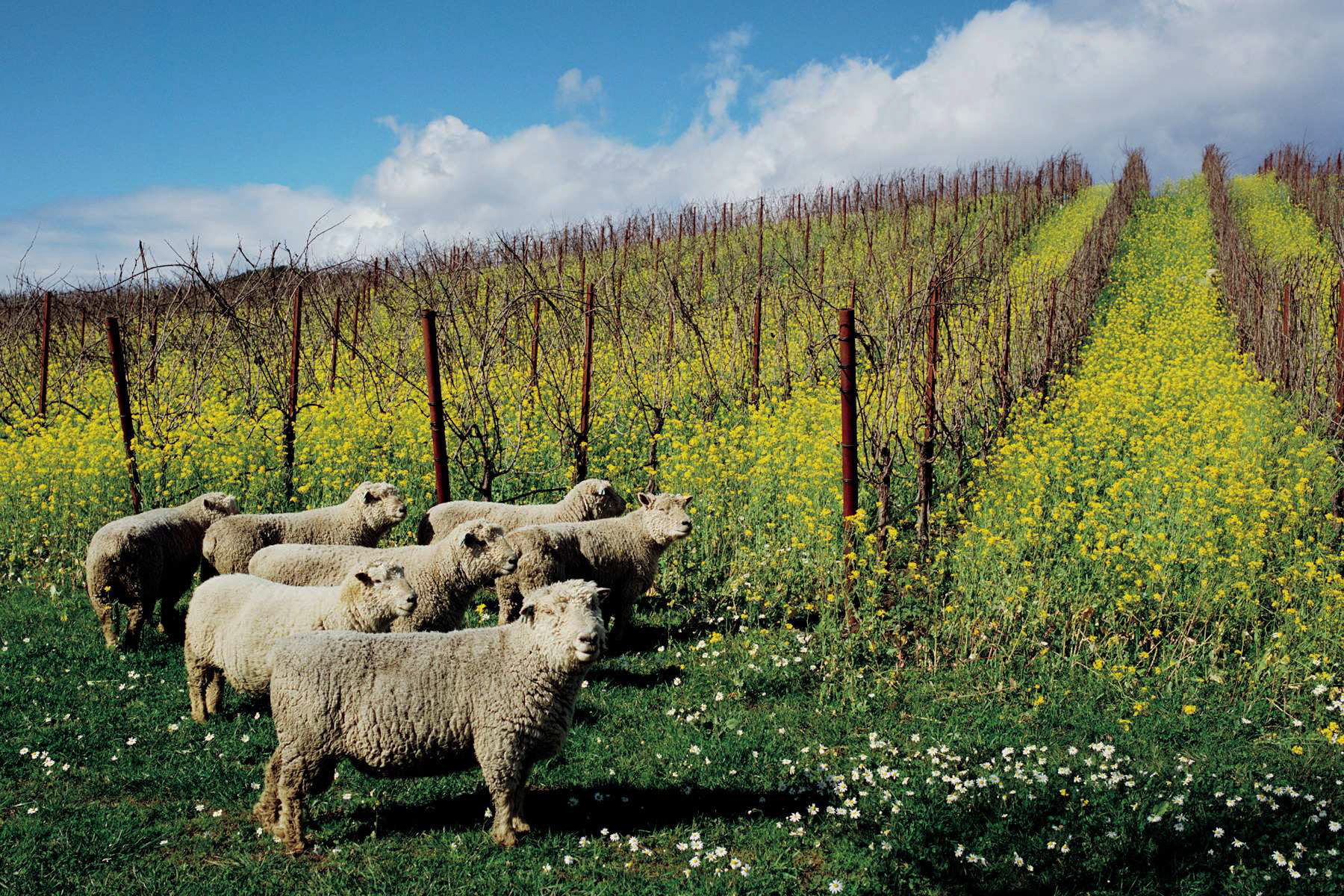
There is an incredible diversity of soils in Santa Barbara County and over time winegrowers have come to understand which grapes perform best in sandy loam, sandstone, alluvial soils and the calcium-rich calcareous soil found in some parts of the region. The application of this knowledge through sustainable practices means that vines perform better, are more resistant to disease and pests, are more drought tolerant and most importantly, produce beautiful fruit and wines with a strong sense of place or terroir.
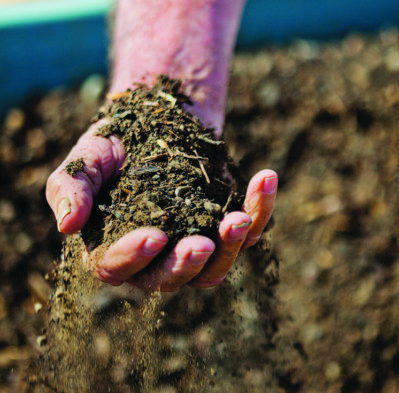
According to R.H. Tesene’s definitive book titled "Santa Maria Style Barbecue", “In the 1950s, a local butcher named Bob Schutz perfected the tri-tip, which is a two to three pound triangular shaped cut off the top sirloin.” And thus a new tradition was born, with tri-tip joining top block sirloin as a signature cut of Santa Maria BBQ. Prior to tri-tip being popularized in the Santa Maria Valley, the cut was mainly disregarded by butchers as something to be used for ground beef or stew meat. In fact, even today, many butchers outside of the Central Coast still don’t know what “tri-tip” is. Pair with California Cabernet Sauvignon or California Zinfandel.
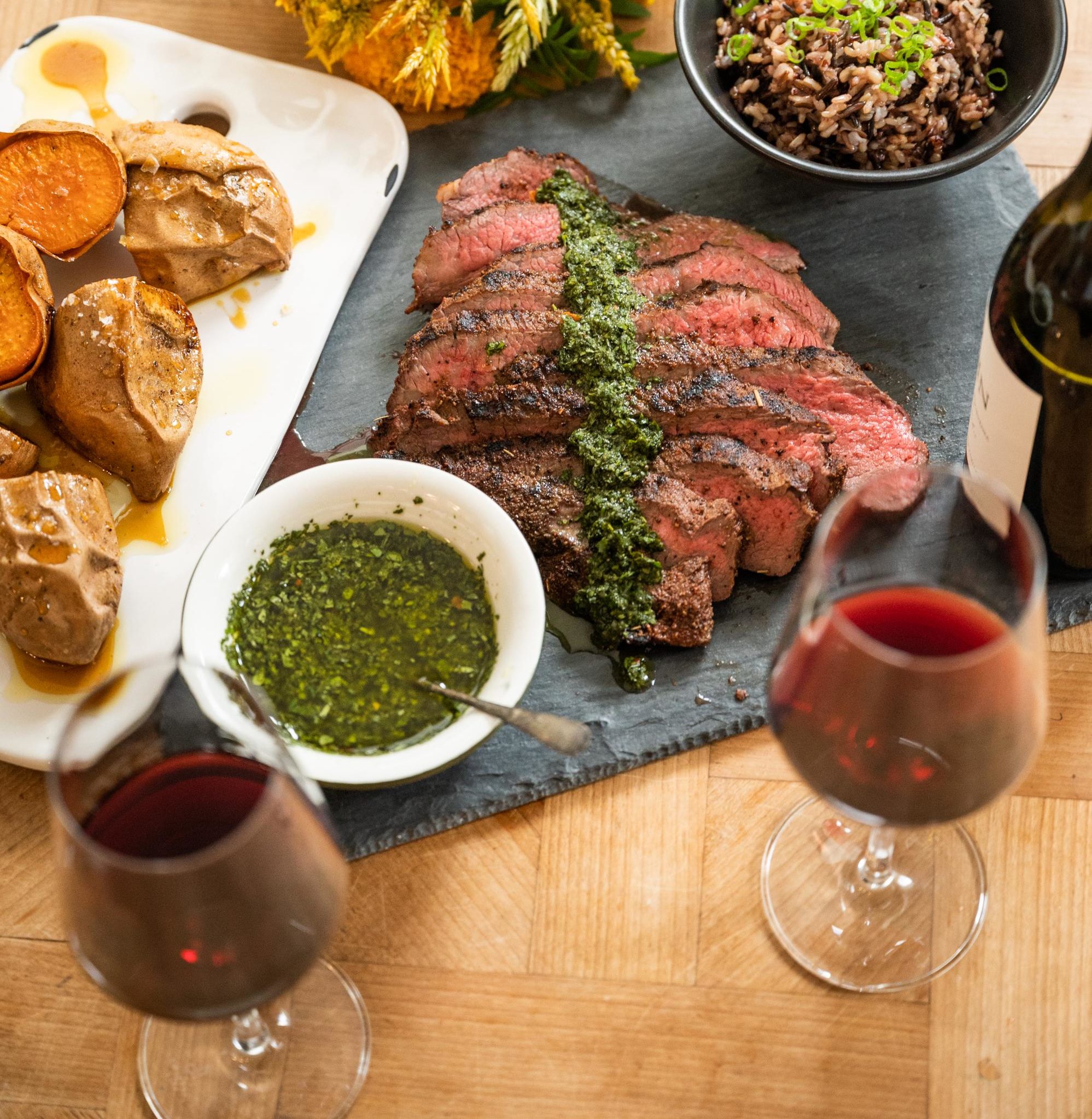
For the Tri-Tip and Santa Maria Seasoning:
For the Chimichurri:

“Sideways” gave California Merlot a bad name, and after the movie, sales plummeted. The protagonist Miles loathed Merlot but he was obsessed with Santa Barbara Pinot Noir. It’s true that Pinot is extremely food-friendly and generally mild-mannered and pairs very well with all kinds of foods, including smoky grilled meats because of its earthy notes.
While we can understand why Miles loved Pinot so much, we think he was totally wrong about Merlot. If you haven’t already, give it another chance. Merlot has plenty of herbal, fruity and bold notes that can stand up to steak just as well as Cabernet.
